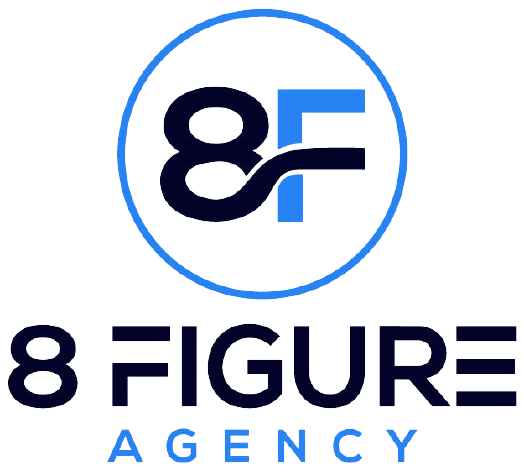In today’s dynamic and competitive business landscape, where collaboration and client satisfaction are paramount, mastering the art of effective client communication is essential.
This art goes beyond the surface-level exchange of information; it involves the delicate balance of building trust and setting clear expectations.
As professionals in various fields strive to deliver exceptional services and products, understanding how to communicate with clients in a way that fosters trust and aligns objectives is a skill that can make or break long-term success.
In this guide, we will delve into the intricacies of effective client communication, exploring strategies, best practices, and real-world examples to help you cultivate stronger client relationships, enhance project outcomes, and ultimately thrive in your professional endeavors.
Building Trust through Communication
Trust is the glue that holds client relationships together. When clients trust their agencies, they are more likely to collaborate, share critical information, and be open to suggestions. A solid foundation of trust in agency-client communication can lead to long-term partnerships, repeat business, and positive referrals.
Techniques for Building Trust through Communication
Here are a few interactions for building trust during client interaction.
- Active listening builds trust by fully engaging, showing attention, and valuing words. You’re able to respect clients, acknowledge emotions, and underscore commitment.
- Demonstrating empathy shows that you grasp others’ feelings. You build trust by acknowledging challenges, celebrating successes, and showing genuine concern, forging a profound connection.
- Transparency and openness about progress, setbacks, and challenges demonstrate integrity. Sharing both positive and negative information shows commitment to solutions, enhancing credibility and client reassurance.
- Consistency and regular updates and responses create reliability, while inconsistencies can breed doubt. Reliably fulfilling promises and maintaining communication patterns reinforces your trustworthiness.
The Role of Non-Verbal Agency-Client Communication in Building Trust
Non-verbal communication, including facial expressions, gestures, and body language, plays a significant role in building trust. Non-verbal cues can convey sincerity, confidence, and active engagement. Maintaining eye contact, offering a warm smile, and using open body language signal that you are attentive and approachable. Consistency between verbal and non-verbal communication enhances the authenticity of your interactions.
Setting Expectations in Client Communication

Clear expectations form the foundation of a productive and positive client-provider relationship.
When expectations are vague or misaligned, it can lead to frustration, dissatisfaction, and even project failure. On the other hand, well-managed expectations enhance transparency, accountability, and client satisfaction. Clear expectations demonstrate professionalism and contribute to an environment of trust and mutual understanding.
Techniques for Setting Expectations Through Agency-Client Communication
Here are a few ways that you and your account managers and team can set expectations through client communication while fostering good relationships.
- Clarifying Goals and Objectives: Begin by aligning the goals and objectives of the project. Clearly articulate what the client wants to achieve and what outcomes they can expect. This establishes a shared vision and helps both parties work toward a common goal.
- Outlining Project Timelines: Clearly communicate the project timeline, including key milestones and deadlines. This prevents unrealistic expectations and allows clients to understand the pace of progress. Regularly update clients on the project’s status to ensure they are informed about any deviations from meeting the original timeline.
- Defining Roles and Responsibilities: Clearly define the roles and responsibilities of both the client and your agency. This includes a contract outlining who will be responsible for specific tasks, approvals, and decision-making. This clarity prevents confusion and avoids situations where responsibilities overlap or fall through the cracks.
- Establishing Communication Protocols: Lay out communication protocols from the outset. Discuss preferred communication channels, frequency of updates, and who the main points of contact will be. Consistent and transparent communication channels enhance client-provider interaction and foster a sense of collaboration.
The Role of Managing Expectations in Building Trust
Managing expectations is a critical component of building and maintaining trust. By openly discussing potential challenges, risks, and limitations, you demonstrate transparency and a commitment to realistic outcomes. Addressing unexpected issues promptly and offering solutions fosters trust, as clients see that you are dedicated to delivering results while being adaptable.
Communication Channels for Effective Agency-Client Communication
Choosing the right agency-client communication channel is crucial for fostering effective client communication. Different situations and preferences call for different methods of interaction.
Pros and Cons of Different Communication Channels
Weigh the pros and cons of the following communication channels to find the one best for your marketing agency.
Face-To-Face Meetings
Face-to-face meetings allow for direct, personal interaction. They enable participants to read non-verbal cues and build a stronger rapport. Face-to-face meetings are also ideal for discussing complex topics, negotiating, and building deeper relationships. On the downside, they can be time-consuming, require physical presence, and may involve scheduling challenges.
Phone Calls
Phone calls offer real-time communication without the need for physical presence. They are suitable for quick updates, discussing immediate matters, and addressing concerns that require verbal clarification. The cons are the lack of visual cues, the potential for miscommunication, and time-zone differences.
We all know that email is a versatile channel for sharing detailed information, documentation, and written records. It allows for thoughtful communication and provides a paper trail for reference. There are however the potential for misinterpretation, delayed responses, and information overload.
Video Conferencing
Video conferencing combines the benefits of face-to-face meetings and remote communication. It’s suitable for discussions that require visual aids, sharing screens, and engaging with remote clients. Technical issues, scheduling conflicts, long periods, and the potential for distractions are a few of the cons.
Choosing the Appropriate Communication Channel
You should choose suitable agency-client communication channels based on the communication’s essence, urgency, and preferences. Complex discussions favor in-person or video, and quick updates suit texts or email. Urgent matters demand calls or texts, and non-urgent ones align with email. Honor preferences, use email or video for complexity, and prioritize video for remote clients.
Overcoming Communication Barriers
Effective agency-client communication is not without its challenges, especially in client interactions where misunderstandings can lead to negative outcomes. Recognizing and overcoming communication barriers is crucial to maintaining strong client-provider connections.
Common Communication Barriers in Client Relationships
These are the common communication barriers in client communications.
- Misunderstandings and ambiguities such as vague language, unclear instructions, or differing interpretations can lead to misunderstandings.
- Passive listening means you’re not fully engaging in the conversation which can result in missed information and miscommunication.
- Language barriers can lead to confusion and inaccuracies.
- Technical jargon used without explanation can alienate clients and hinder comprehension.
- Emotional barriers such as frustration or defensiveness, can distort the intended message.
- Cultural differences in norms, communication styles, and expectations can lead to misinterpretation.
Techniques for Overcoming Communication Barriers
Here are a few ways that you can overcome these barriers:
- Clear and concise language ensures clarity. You should avoid unnecessary jargon and technical terms, or explain them if necessary.
- Asking clarifying questions and encouraging clients to ask questions ensures they understand.
- Repeating information reinforces key points and helps in retention and avoiding misunderstandings.
- Seeking feedback from clients provides the opportunity to gauge their understanding as well as address any potential issues or misconceptions.
The Role of Cultural Differences in Communication:
Acknowledge and honor cultural diversity. Stay mindful of potential misinterpretations arising from distinct communication norms across cultures.
Ethics in Client Communication
Ethical communication forms the backbone of trust, which is crucial for any client-provider partnership. Ethical communication ensures that information is conveyed accurately, potential conflicts of interest are avoided, and the client’s confidentiality is upheld. Ethical behavior not only reflects positively on your agency’s success but also enhances the client’s confidence and satisfaction.
Techniques for Ensuring Ethical Communication
Honesty and transparency mean disclosing information about project progress, challenges, and potential risks openly.
Confidentiality requires safeguarding sensitive client information. Their explicit consent is needed before sharing any client or account-related information with other agencies or third parties.
Avoiding conflicts of interest that could compromise objectivity necessitates prioritizing the client’s best interests over personal gain.
The Role of Ethics in Building Trust and Maintaining Long-Term Relationships
Ethical communication is a cornerstone of trust-building. When clients perceive ethical behavior in your agency client communication, they are more likely to view your agency as credible, reliable, and committed to their interests.
The Importance of Feedback
Feedback is a powerful tool that allows clients to express their opinions, concerns, and suggestions. It offers your agency the opportunity to assess your performance, make necessary adjustments, and ensure that client expectations are being met. Constructive feedback fosters an environment of open communication and demonstrates a commitment to continuous improvement.
Techniques for Soliciting and Receiving Feedback
- Active listening shows that you value their feedback by giving them your full attention.
- Open-ended questions encourage clients to provide detailed and honest feedback.
- Surveys, use a mix of quantitative data and qualitative questions to gather structured data and feedback on specific aspects of your services.
With an effective system and process in place to gather feedback, you can not only enhance your services but also strengthen your client relationships. At 8 Figure Agency, we specialize in helping businesses like yours build and optimize these feedback mechanisms to scale your operations and take your business to 8 figures.
Learn More About How We Can Help Scale Your Agency!
Crisis Communication

Crisis situations, whether they are internal or external, can create uncertainty and concern among clients. Effective crisis agency-client communication is crucial for managing expectations, addressing concerns, and maintaining a sense of trust. How you communicate during a crisis can determine whether clients view you as a reliable partner who can navigate challenges or as an entity that lacks transparency and accountability during your working relationships.
Here are a few strategies to navigate crisis communication:
- Rapid responses inform clients about the situation as delayed or no response to poor communication that can lead to rumors and further anxiety.
- Transparency about the situation, its impact, and what you are doing to address it is mandatory. Concealing information can lead to mistrust.
- Empathy allows you to acknowledge the concerns and emotions of clients. This also shows understanding and compassion to reassure them.
- Consistency in communication keeps clients informed of developments. Inconsistent updates can lead to confusion and frustration.
The Role of Crisis Communication in Maintaining Trust and Credibility
Preserving trust hinges on transparent and honest crisis addressing, showcasing dedication to client welfare, while proactive management reinforces trust. Effective crisis communication not only highlights professionalism but also amplifies credibility, presenting a composed and well-prepared response.
Effective Communication in Remote Work
In remote work scenarios, teams might be scattered across different locations, time zones, and even cultures. Better agency-client communication becomes crucial for maintaining cohesion, productivity, and alignment. It ensures that team members understand their tasks, deadlines, and responsibilities, while also fostering a sense of connection and engagement.
Furthermore, promoting inclusion and value for remote team members is facilitated by transparent and steady communication between teams. Trust in team endeavors is fostered through candid sharing of progress and challenges.
Effective Communication in Marketing
Marketing is all about connecting with your audience, conveying your message, and motivating them to take action. Good communication ensures that your message resonates, grabs attention, and compels your target audience to engage with your brand. In an increasingly competitive market, the ability to communicate effectively can make the difference between success and obscurity. Let 8 Figure Agency help you craft winning marketing proposals!
These are the most effective techniques for effective communication in marketing:
- Identifying target audiences, their demographics, preferences, behaviors, and pain points then tailoring your communication to speak directly to the needs and desires of your ideal customers.
- Crafting compelling messages that highlight the unique value your product or service offers. Use persuasive language and storytelling to emotionally connect with your audience.
- Choosing appropriate communication channels that your target audience frequents. Be sure to utilize a mix of channels and tools such as social media, email, content marketing, and advertising.
The Role of Effective Marketing Communication in Building Trust and Driving Sales
Establishing trust is facilitated through clear communication, while credibility and reliability are solidified by authentic messaging and consistent branding. Effective communication serves as a catalyst for encouraging potential customers to act, as well-crafted messages showcase how your product or service caters to their needs.
The Role of Emotional Intelligence in Client Communication
Client interactions and relationships are built on more than just technical expertise; they hinge on emotional connections and good communication. Emotional intelligence allows your agency and the whole team to navigate complex emotions, understand client needs, and respond in ways that foster understanding, collaboration, and agency-client relationships.
Emotional intelligence (EI) fosters trust by conveying a genuine regard for your client’s emotions, while open and empathetic communication fosters trust and paves the way for honest conversations.
Conclusion
Effective client communication isn’t just about relaying information; it’s about understanding emotions, fostering connections, and building rapport. It is a strategic tool that builds trust, fosters loyalty, and enhances the overall client experience.
By understanding the importance of clear communication, actively listening to client needs, and consistently delivering transparent updates, businesses can create strong, enduring partnerships that are mutually beneficial.
Ready to scale your agency to 8-figures?
By partnering with 8 Figure Agency, you’re not just gaining access to a wealth of knowledge and expertise; you’re unlocking the potential to scale your business to 8 figures and beyond. Our proven strategies, tailored solutions, and dedicated support will empower you to navigate the complexities of client communication and relationship management with confidence.



















































